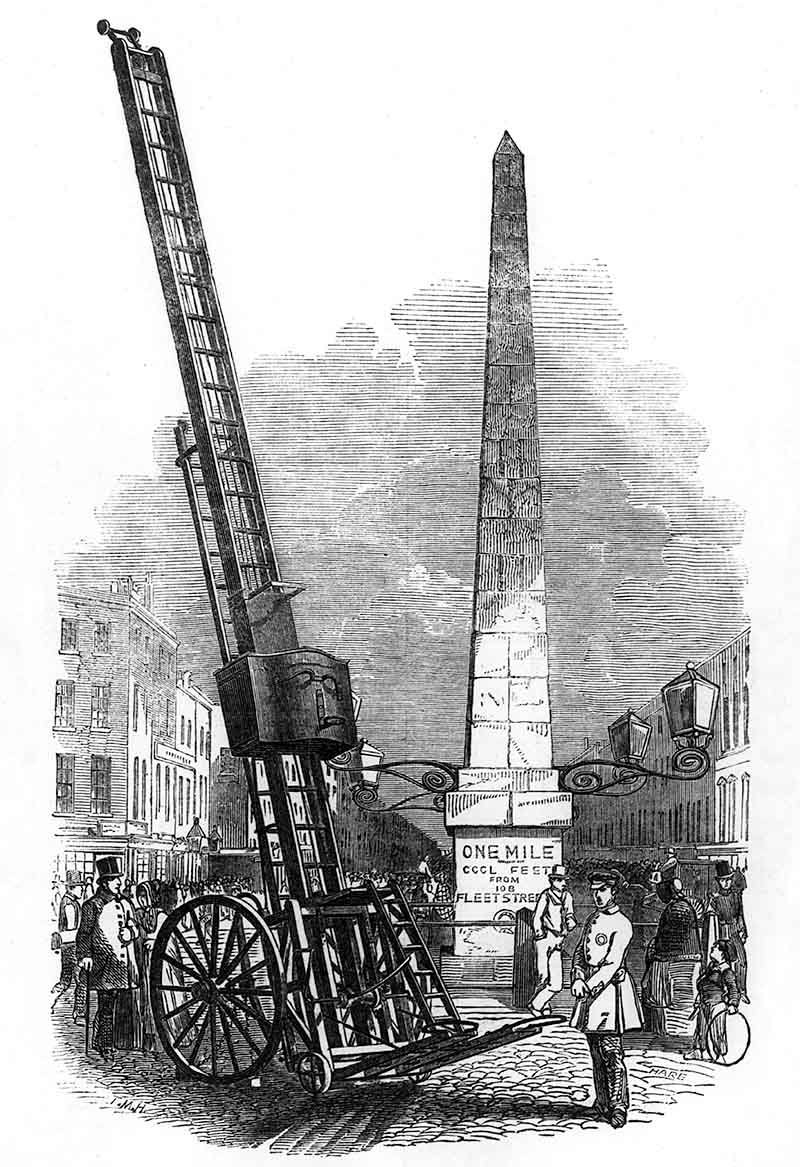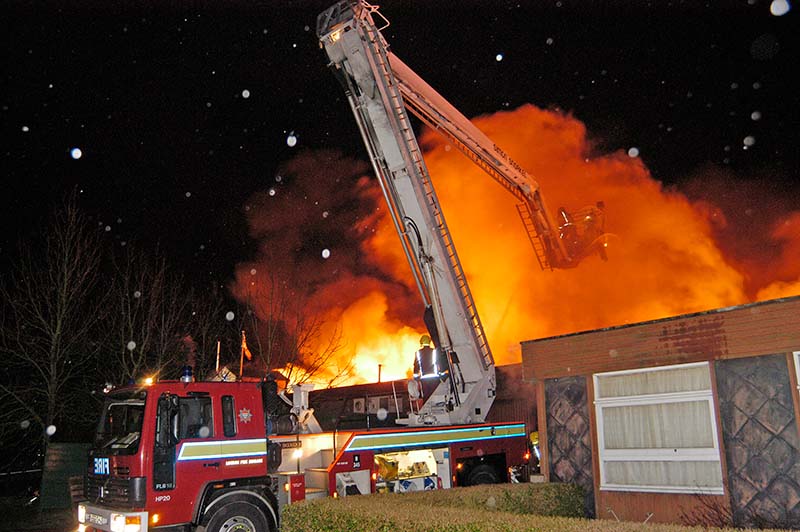Ladders have always been one of the major pieces of equipment carried on fire engines. They are used to help people escape from fires when all other escape routes are blocked, fight fires and rescue.

Fire Insurance brigades in the 19th century focused on putting out fires more than helping people escape. They also rarely carried any form of ladder, relying instead on ladders available at the scene of the fire. For that reason, the Society for Protection of Life from Fire (SPLF) was set up in 1836. It was as a charity responsible for fire rescues who had their own fleet of ladders. With the establishment of the Metropolitan Fire Brigade as a public service in 1865, the Brigade adopted rescue and escape into its service.
There are different types of ladders which are used for a range of tasks and they have also advanced over time.
Tapering ladders were introduced in the early 1800s. The short tapering ladders were 6ft 6in long and could be slotted together to give greater length. The maximum being 5 ladders joined, giving a working length of 25 ft.
In 1836 London received its first wheeled escape introduced by the SPLF. The early escapes were often just a fixed ladder on wheels. Some had a hinged extension that could be raised to give added height. Many ladders also had a chute attached to enable people to be quickly lowered down.

Progression led to escape ladders being made with three sections. The top two could extend by means of cables attached to winch handles, and the pitch of the ladder could also be changed. The majority of ladders were 50ft long and made of wood or steel. They were taken out of service in the 1980s.
The hook ladder was created in France and adopted by the LFB in the early 1900s. They were designed to enable firefighters to scale the outside of a building. This was a lightweight wooden ladder, 13ft 4in long. It was fitted with steel hooks on one end. This ladder enabled the user to reach any level of a building in a situation where other ladders could not be pitched. Hook ladders were taken out of service in the early 1980s due to several major accidents during firefighter training.

The first turntable ladder was produced in Germany in 1906. It was capable of extending to 75ft and was horse drawn. Turntable ladders improved over the years. Notable ladders were produced by Metz, Merryweather and Magirus. The standard height for these ladders was a hundred feet and they were motorised. As the name implies, the ladder is mounted on a turntable. This could be rotated through 360 degrees and would be used with or without the head of the ladder resting on a building. Firefighters can direct a hose from the top or reach people that need to be rescued.

Another version of this is a hydraulic platform. Known as a Simon Snorkel it can be used for both rescue purposes and as a water tower.

This initially had a maximum working height of 34.5m is mounted on a turntable and can be rotated through 360 degrees. Unlike the turntable ladder an aerial ladder can extend in different directions.
In 2021 the new 64m ladders were added to the fleet.

This article was researched and written by museum volunteer Halima B